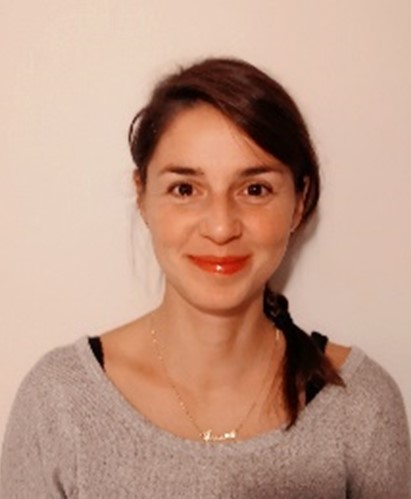November 2021
Laura and her team at SAFT main activities in SAFELiMOVE are specially focused on and leading of the Work Package 6: “Cell design development and prototyping” that mainly concerns the 10 Ah cell manufacturing and monitoring from anticipation and design to performance characterization. Laura has been working at SAFT since October 2019 focusing on Solid State battery at in the SAFT Solid State Battery Program first and now at the Research department. Her main activity concerns the study of polymer and hybrid electrolytes with a special focus on battery safety concerns and characterization.
What was your original motivation to become a researcher?
As a child, I could not imagine that I would one day be a researcher. It was my studies, physicochemistry of materials and electrochemistry, but above all the people I met during my PhD and my post-doctoral positions, that really showed me the interest of understanding what is happening at the scale of materials and go further in studies. During my previous experiences, I needed to be particularly involved in projects and various studies. For me, research is a bit like a game, every day we observe and discover new things and it’s a chance to be able to make it your job. We never get bored!
What is your (main) research area today?
Currently, the main part of my research work revolves around battery safety and in particular through the use of new materials (solid electrolytes) and new processes (dry process)
What is the main objective of your team in SAFELiMOVE?
For SAFT, being able to participate in such a project is a great opportunity. Thanks to the knowledge and experience of all partners, SAFT aims to study new manufacturing processes for solid state batteries and to produce them. All this being done with polymer and ceramic materials in development.
What expertise and facilities does your ream have to meet those objectives?
SAFT is a major player in the production of batteries. His experience in prototyping allows him to anticipate coherent cell design. The prototyping line that was set up in 2020, as well as the motivation to develop it and adapt it to different technologies, will ensure the production of high capacity prototypes
Which aspects of your research at SAFELiMOVE do you believe are the most innovative and what unique opportunities offers SAFELiMOVE to yourself and/or your organisation?
As said earlier, Safelimove is an incredible opportunity for SAFT to develop and manufacture solid-state batteries, in particular thanks to the experience of other partners and in particular CIDETEC.
How do you see the future use of the SAFELiMOVE-results and the impact of SAFELiMOVE-project in our daily lives?
In research that the initiation of science and technology has brought so many progresses in the life of today in whole world. Science is the intelligent and practical activity incorporating the systematic study of the structure and behaviour of the physical and natural world through observation and experiment. I would like the project and the resulting results to lead to the implementation of an efficient technology for safer batteries and all of this to allow an incredible leap forward in the implementation of batteries for cleaner vehicles. But even if the application is not immediate, the Safelimove project and the collaborative work behind it are already having beneficial effects on the advancement of research and the knowledge of the various partner laboratories and that alone is already a benefit.
I would like to share a citation of Albert Sznet Gyorgyi that I find very interesting and which well reflects the research: “Research is to see what everybody else has seen, and to think what nobody else has thought.”

